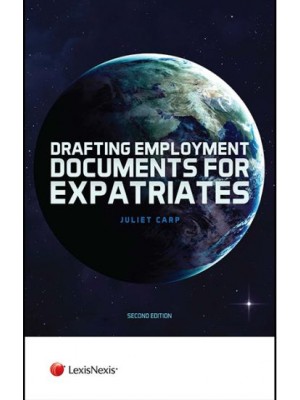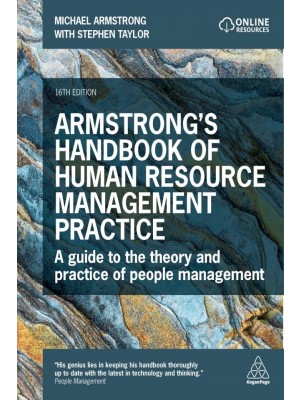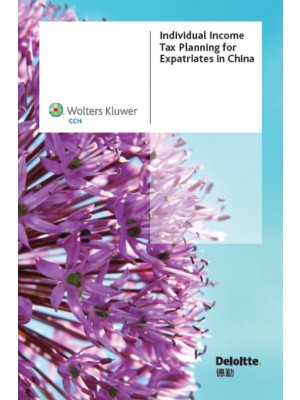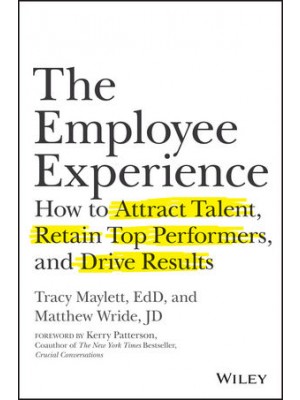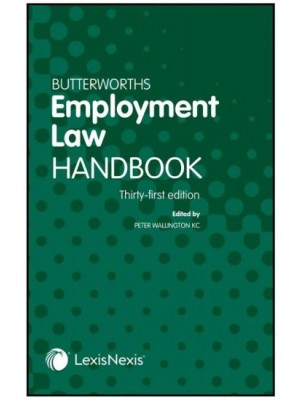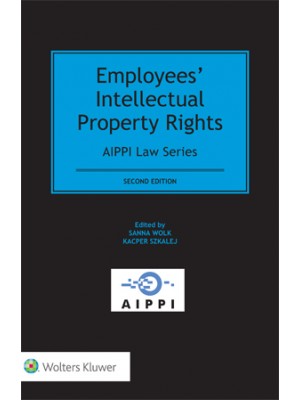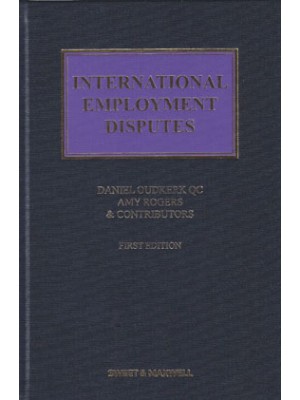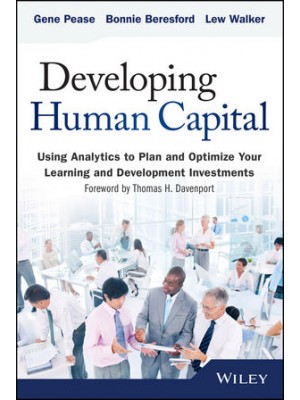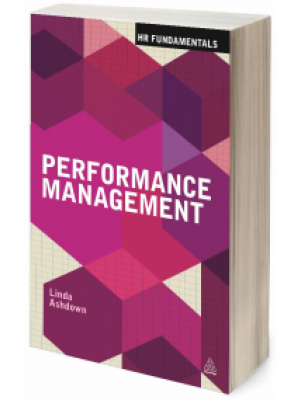Foreword.
Motivation and Scope of this Book: A Quick Guided Tour.
PART I INTEREST RATE RISK.
Introduction to Part I.
1 The Repricing Gap Model.
1.1 Introduction.
1.2 The gap concept.
1.3 The maturity-adjusted gap.
1.4 Marginal and cumulative gaps.
1.5 The limitations of the repricing gap model.
1.6 Some possible solutions.
1.6.1 Non-uniform rate changes: the standardized gap.
1.6.2 Changes in rates of on-demand instruments.
1.6.3 Price and quantity interaction.
1.6.4 Effects on the value of assets and liabilities.
Selected Questions and Exercises.
Appendix 1A The Term Structure of Interest Rates.
Appendix 1B Forward Rates.
2 The Duration Gap Model.
2.1 Introduction.
2.2 Towards mark-to-market accounting.
2.3 The duration of financial instruments.
2.3.1 Duration as a weighted average of maturities.
2.3.2 Duration as an indicator of sensitivity to interest rates charges.
2.3.3 The properties of duration.
2.4 Estimating the duration gap.
2.5 Problems of the duration gap model.
Selected Questions and Exercises.
Appendix 2A The Limits of Duration.
3 Models Based on Cash-Flow Mapping.
3.1 Introduction.
3.2 The objectives of cash-flow mapping and term structure.
3.3 Choosing the vertices of the term structure.
3.4 Techniques based on discrete intervals.
3.4.1 The duration intervals method.
3.4.2 The modified residual life method.
3.4.3 The Basel Committee method.
3.5 Clumping.
3.5.1 Structure of the methodology.
3.5.2 An example.
3.5.3 Clumping on the basis of price volatility.
3.6 Concluding comments.
Selected Questions and Exercises.
Appendix 3A Estimating the Zero-coupon Curve.
4 Internal Transfer Rates.
4.1 Introduction.
4.2 Building an ITR system: a simplified example.
4.3 Single and multiple ITRs.
4.4 Setting internal interest transfer rates.
4.4.1 ITRs for fixed-rate transactions.
4.4.2 ITRs for floating-rate transactions.
4.4.3 ITRs for transactions indexed at “non-market” rates.
4.5 ITRs for transactions with embedded options.
4.5.1 Option to convert from a fixed to a floating rate.
4.5.2 Floating rate loan subject to a cap.
4.5.3 Floating rate loan subject to a floor.
4.5.4 Floating rate loan subject to both a floor and a cap.
4.5.5 Option for early repayment.
4.6 Summary: the ideal features of an ITR system.
Selected Questions and Exercises.
Appendix 4A Derivative Contracts on Interest Rates.
PART II MARKET RISKS.
Introduction to Part II.
5 The Variance-Covariance Approach.
5.1 Introduction.
5.2 VaR derivation assuming normal return distribution.
5.2.1 A simplified example.
5.2.2 Confidence level selection.
5.2.3 Selection of the time horizon.
5.3 Sensitivity of portfolio positions to market factors.
5.3.1 A more general example.
5.3.2 Portfolio VaR.
5.3.3 Delta-normal and asset-normal approaches.
5.4 Mapping of risk positions.
5.4.1 Mapping of foreign currency bonds.
5.4.2 Mapping of forward currency positions.
5.4.3 Mapping of forward rate agreements.
5.4.4 Mapping of stock positions.
5.4.5 Mapping of bonds.
5.5 Summary of the variance-covariance approach and main limitations.
5.5.1 The normal distribution hypothesis.
5.5.2 Serial independence and stability of the variance-covariance matrix.
5.5.3 The linear payoff hypothesis and the delta/gamma approach.
Selected Questions and Exercises.
Appendix 5A Stockmarket Betas.
6 Volatility Estimation Models.
6.1 Introduction.
6.2 Volatility estimation based upon historical data: simple moving averages.
6.3 Volatility estimation based upon historical data: exponential moving averages.
6.4 Volatility prediction: GARCH models.
6.5 Volatility prediction: implied volatility.
6.6 Covariance and correlation estimation.
Selected Questions and Exercises.
7 Simulation Models.
7.1 Introduction.
7.2 Historical simulations.
7.2.1 A first example: the VaR of a single position.
7.2.2 Estimation of a portfolio’s VaR.
7.2.3 A comparison between historical simulations and the.
variance-covariance approach.
7.2.4 Merits and limitations of the historical simulation method.
7.2.5 The hybrid approach.
7.2.6 Bootstrapping and path generation.
7.2.7 Filtered historical simulations.
7.3 Monte Carlo simulations.
7.3.1 Estimating the VaR of a single position.
7.3.2 Estimating portfolio VaR.
7.3.3 Merits and limitations of Monte Carlo simulations.
7.4 Stress testing.
Selected Questions and Exercises.
8 Evaluating VaR Models.
8.1 Introduction.
8.2 An example of backtesting: a stock portfolio VaR.
8.3 Alternative VaR model backtesting techniques.
8.3.1 The unconditional coverage test.
8.3.2 The conditional coverage test.
8.3.3 Lopez test based upon a loss function.
8.3.4 Tests based upon the entire distributio.
Selected Questions and Exercises.
Appendix 8A VaR Model Backtesting According to the Basel Committee.
9 VaR Models: Summary, Applications and Limitations.
9.1 Introduction.
9.2 A summary overview of the different models.
9.3 Applications of VaR models.
9.3.1 Comparison among different risks.
9.3.2 Determination of risk taking limits.
9.3.3 The construction of risk-adjusted performance (RAP) measures.
9.4 Six “false shortcomings” of VaR.
9.4.1 VaR models disregard exceptional events.
9.4.2 VaR models disregard customer relations.
9.4.3 VaR models are based upon unrealistic assumptions.
9.4.4 VaR models generate diverging results.
9.4.5 VaR models amplify market instability.
9.4.6 VaR measures “come too late, when damage has already been done”.
9.5 Two real problems of VaR models.
9.5.1 The size of losses.
9.5.2 Non-subadditivity.
9.6 An alternative risk measure: expected shortfall (ES).
Selected Questions and Exercises.
Appendix 9A Extreme Value Theory.
PART III CREDIT RISK.
Introduction to Part III.
10 Credit-Scoring Models.
10.1 Introduction.
10.2 Linear discriminant analysis.
10.2.1 The discriminant function.
10.2.2 Wilks’ Lambada.
10.2.3 Altman’s Z-score.
10.2.4 From the score to the probability of default.
10.2.5 The cost of errors.
10.2.6 The selection of discriminant variables.
10.2.7 Some hypotheses underlying discriminant analysis.
10.3 Regression models.
10.3.1 The linear probabilistic model.
10.3.2 The logit and probit models.
10.4 Inductive models.
10.4.1 Neural networks.
10.4.2 Genetic algorithms.
10.5 Uses, limitations and problems of credit-scoring models.
Selected Questions and Exercises.
Appendix 10A The Estimation of the Gamma Coefficients in Linear.
Discriminant Analysis.
11 Capital Market Models.
11.1 Introduction.
11.2 The approach based on corporate bond spreads.
11.2.1 Foreword: continuously compounded interest rates.
11.2.2 Estimating the one-year probability of default.
11.2.3 Probabilities of default beyond one year.
11.2.4 An alternative approach.
11.2.5 Benefits and limitations of the approach based on corporate.
bond spreads.
11.3 Structural models based on stock prices.
11.3.1 An introduction to structural models.
11.3.2 Merton’s model: general structure.
11.3.3 Merton’s model: the role of contingent claims analysis.
11.3.4 Merton’s model: loan value and equilibrium spread.
11.3.5 Merton’s model: probability of default.
11.3.6 The term structure of credit spreads and default probabilities.
11.3.7 Strengths and limitations of Merton’s model.
11.3.8 The KMV model for calculating Vo and ov.
11.3.9 The KMV approach and the calculation of PD.
11.3.10 Benfits and limitations of the KMV model.
Selected Questions and Exercises.
Appendix 11A Calculating the Fair Spread on a Loan.
Appendix 11B Real and Risk-Neutral Probabilities of Default.
12 LGD and Recovery Risk.
12.1 Introduction.
12.2 What factors drive recovery rates?
12.3 The estimation of recovery rates.
12.3.1 Market LGD and default LGD.
12.3.2 Computing workout LGDs.
12.4 From past data to LGD estimates.
12.5 Results from selected empirical studies.
12.6 Recovery risk.
12.7 The link between default risk and recovery risk.
Selected Questions and Exercises.
Appendix 12A The Relationship Between PD and RR in the Merton Model.
13 Rating Systems.
13.1 Introduction.
13.2 Rating assignment.
13.2.1 Internal ratings and agency ratings: how do they differ?
13.2.2 The assignment of agency ratings.
13.2.3 Rating assessment in bank internal rating systems.
13.3 Rating quantification.
13.3.1 The possible approaches.
13.3.2 The actuarial approach: marginal, cumulative and annualized default rates.
13.3.3 The actuarial approach: migration rates.
13.4 Rating validation.
13.4.1 Some qualitative data.
13.4.2 Quantitative criteria for validating rating assignments.
13.4.3 The validation of the rating quantification step.
Selected Questions and Exercises.
14 Portfolio Models.
14.1 Introduction.
14.2 Selecting time horizon and confidence level.
14.2.1 The choice of risk horizon.
14.2.2 The choice of the confidence level.
14.3 The migration approach: CreditMetrics TM.
14.3.1 Estimating risk on a single credit.
14.3.2 Estimating the risk of a two-exposure portfolio.
14.3.3 Estimating asset correlation.
14.3.4 Application to a portfolio of N positions.
14.3.5 Merits and limitations of the CreditMetrics TM model.
14.4 The structural approach: PortfolioManager TM.
14.5 The macroeconomic approach: CreditPortfolioView TM.
14.5.1 Estimating conditional default probabilities.
14.5.2 Estimating the conditional transition matrix.
14.5.3 Merits and limitations of CreditPortfolioView TM.
14.6 The actuarial approach: the CreditRisk+ TM model.
14.6.1 Estimating the probability distribution of defaults.
14.6.2 The probability distribution of losses.
14.6.3 The distribution of losses of the entire portfolio.
14.6.4 Uncertainty about the average default rate and correlations.
14.6.5 Merits and limitations of CreditRisk+ TM.
14.7 A brief comparison of the main models.
14.8 Some limitations of the credit risk models.
14.8.1 The treatment of recovery risk.
14.8.2 The assumption of independence between exposure risk and.
default risk.
14.8.3 The assumption of independence between credit risk and market risk.
14.8.4 The impossibility of backtesting.
Selected Questions and Exercises.
Appendix 14A Asset Correlation Versus Default Correlation.
15 Some Applications of Credit Risk Measurement Models.
15.1 Introduction.
15.2 Loan pricing.
15.2.1 The cost of the expected loss.
15.2.2 The cost of economic capital absorbed by unexpected losses.
15.3 Risk-adjusted performance measurement.
15.4 Setting limits on risk-taking units.
15.5 Optimizing the composition of the loan portfolio.
Selected Questions and Exercises.
Appendix 15A Credit Risk Transfer Tools.
16 Counterparty Risk on OTC Derivatives.
16.1 Introduction.
16.2 Settlement and pre-settlement risk.
16.3 Estimating pre-settlement risk.
16.3.1 Two approaches suggested by the Basel Committee (1988).
16.3.2 A more sophisticated approach.
16.3.3 Estimating the loan equivalent exposure of an interest rate swap.
16.3.4 Amortization and diffusion effect.
16.3.5 Peak exposure (OE) and average expected exposure (AEE).
16.3.6 Further approaches to LEE computation.
16.3.7 Loan equivalent and Value at Risk: analogies and differences.
16.4 Risk-adjusted performance measurement.
16.5 Risk-mitigation tools for pre-settlement risk.
16.5.1 Bilateral netting agreements.
16.5.2 Safety margins.
16.5.3 Recouponing and guarantees.
16.5.4 Credit triggers and early redemption options.
PART IV OPERATIONAL RISK.
Introduction to Part IV.
17 Operational Risk: Definition, Measurement and Management.
17.1 Introduction.
17.2 OR: how can we define it?
17.2.1 OR risk factors.
17.2.2 Some peculiarities of OR.
17.3 Measuring OR.
17.3.1 Identifying the risk factors.
17.3.2 Mapping business units and estimating risk exposure.
17.3.3 Estimating the probability of the risky events.
17.3.4 Estimating the losses.
17.3.5 Estimating expected loss.
17.3.6 Estimating unexpected loss.
17.3.7 Estimating capital at risk against OR.
17.4 Towards an OR management system.
17.5 Final remarks.
Selected Questions and Exercises.
Appendix 17A OR Measurement and EVT.
PART V REGULATORY CAPITAL REQUIREMENTS.
Introduction to Part V.
18 The 1988 Capital Accord.
18.1 Introduction.
18.2 The capital ratio.
18.2.1 Regulatory capital (RC).
18.2.1.1 Tier 1 capital.
18.2.1.2 Supplementary capital (Tier 2 and Tier 3).
18.2.2 Risk weights (wi).
18.2.3 Assets included in the capital ration (Ai).
18.3 Shortcomings of the capital adequacy framework.
18.3.1 Focus on credit risk only.
18.3.2 Poor differentiation of risk.
18.3.3 Limited recognition of the link between maturity and credit risk.
18.3.4 Disregard for portfolio diversification.
18.3.5 Limited recognition of risk mitigation tools.
18.3.6 “Regulatory arbitrage”.
18.4 Conclusions.
Selected Questions and Exercises.
Appendix 18A The Basel Committee.
19 The Capital Requirements for Market Risks.
19.1 Introduction.
19.2 Origins and characteristics of capital requirements.
19.2.1 Origins of the requirements.
19.2.2 Logic and scope of application.
19.2.3 The “building blocks” approach.
19.2.4 Tier 3 capital.
19.3 The capital requirements on debt securities.
19.3.1 The requirement for specific risk.
19.3.2 The requirement for generic risk.
19.4 Positions in equity securities: specific and generic requirements.
19.5 The requirement for positions in foreign currencies.
19.6 The requirement for commodity positions.
19.7 The use of internal models.
19.7.1 Criticism of the Basel Committee proposals.
19.7.2 The 1995 revised draft.
19.7.3 The final amendment of January 1996.
19.7.4 Advantages and limitations of the internal model approach.
19.7.5 The pre-commitment approach.
Selected Questions and Answers.
Appendix 19A Capital requirements Related to Settlement, Counterparty and Concentration Risks.
20 The New Basel Accord.
20.1 Introduction.
20.2 Goals and contents of the reform.
20.3 Pillar One: the standard approach to credit risk.
20.3.1 Risk weighting.
20.3.2 Collateral and guarantees.
20.4 The internal ratings-based approach.
20.4.1 Risk factors.
20.4.2 Minimum requirements of the internal ratings system.
20.4.3 From the rating system to the minimum capital requirements.
20.5 Pillar two: a new role for supervisory authorities.
20.6 Pillar three: market discipline.
20.6.1 The rationale underlying market discipline.
20.6.2 The reporting obligations required by the Basel Committee.
20.6.3 Other necessary conditions for market discipline.
20.7 Pros and cons of Basel II.
20.8 The Impact of Basel II.
20.8.1 The impact on first implementation.
20.8.2 The dynamic impact: procyclicality.
Selected Questions and Exercises.
21 Capital Requirements on Operational Risk.
21.1 Introduction.
21.2 The capital requirement on operational risk.
21.2.1 The basic indicator approach.
21.2.2 The standardized approach.
21.2.3 The requirements for adopting the standardized approach.
21.2.4 Advanced measurement approaches.
21.2.5 The requirements for adopting advanced approaches.
21.2.6 The role of the second and third pillars.
21.2.7 The role of insurance coverage.
21.3 Weaknesses of the 2004 Accord.
21.4 Final remarks.
Selected Questions and Exercises.
PART VI CAPITAL MANAGEMENT AND VALUE CREATION.
Introduction to Part VI.
22 Capital Management.
22.1 Introduction.
22.2 Defining and measuring capital.
22.2.1 The definition of capital.
22.2.2 The relationship between economic capital and available capital.
22.2.3 Calculating a bank’s economic capital.
22.2.4 The relationship between economic capital and regulatory capital.
22.2.5 The limitation of regulatory capital: implications on pricing and.
performance measurement.
22.2.6 The determinants of capitalization.
22.3 Optimizing regulatory capital.
22.3.1 Technical features of the different regulatory capital requirements.
22.3.2 The actual use of the various instruments included within regulatory capital.
22.4 Other instruments not included within regulatory capital.
22.4.1 Insurance capital.
22.4.2 Contingent capital.
Selected Questions and Exercises.
23 Capital Allocation.
23.1 Introduction.
23.2 Measuring capital for the individual business units.
23.2.1 The “benchmark capital” approach.
23.2.2 The model-based approach.
23.2.3 The Earnings-at-Risk (EaR) approach.
23.3 The relationship between allocated capital and total capital.
23.3.1 The concept of diversified capital.
23.3.2 Calculating diversified capital.
23.3.3 Calculating the correlations used in determining diversified capital.
23.4 Capital allocated and capital absorbed.
23.5 Calculating risk-adjusted performance.
23.6 Optimizing the allocation of capital.
23.6.1 A model for optimal capital allocation.
23.6.2 A more realistic model.
23.7 The organizational aspects of the capital allocation process.
Selected Questions and Exercises.
Appendix 23A The Correlation Approach.
Appendix 23B The Virtual nature of Capital Allocation.
24 Cost of Capital and Value Creation.
24.1 Introduction.
24.2 The link between risk management and capital budgeting.
24.3 Capital budgeting in banks and non-financial enterprises.
24.4 Estimating the cost of capital.
24.4.1 Estimating the cost of capital.
24.4.2 The method based on the price/earnings ratio.
24.4.3 The method based on the Capital Asset Pricing Model (CAPM).
24.4.4 Caveats.
24.5 Some empirical examples.
24.6 Value creation and RAROC.
24.7 Value creation and EVA.
24.8 Conclusions.
Selected Questions and Exercises.
Bibliography.
Index.








